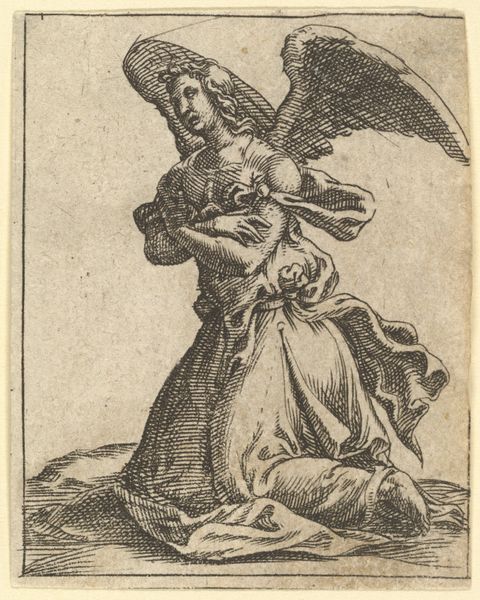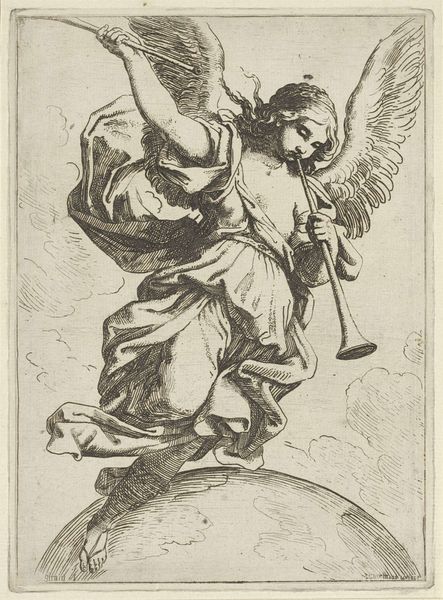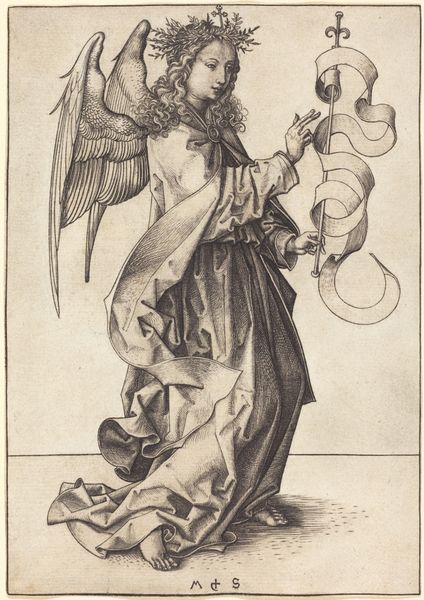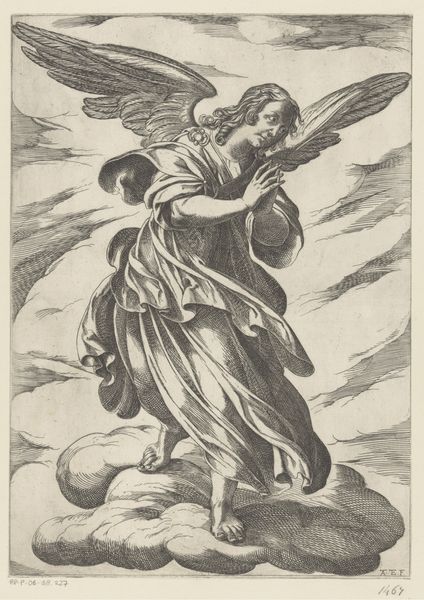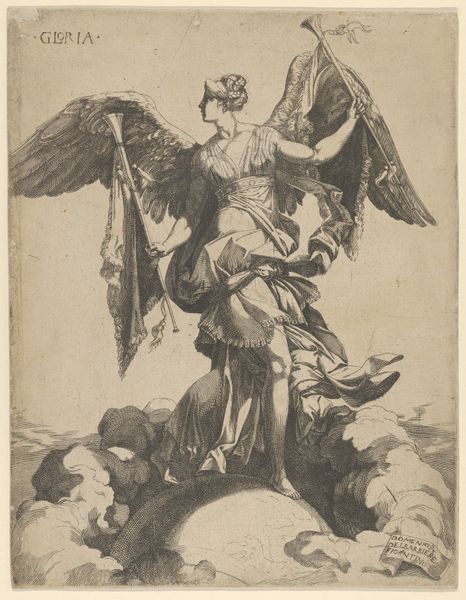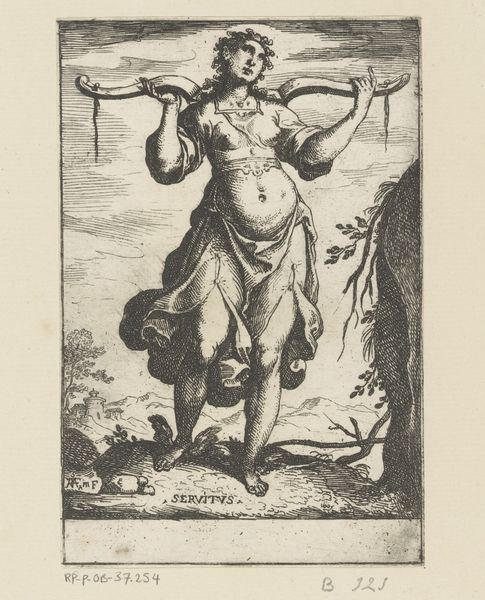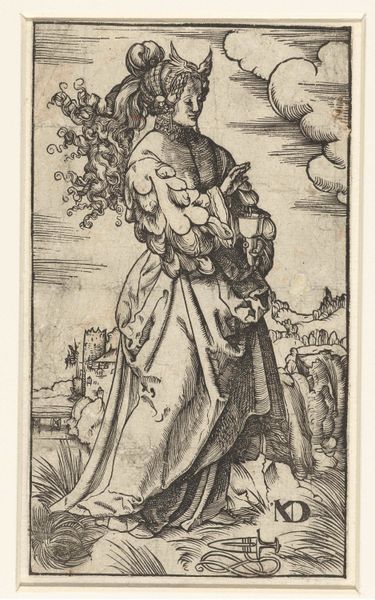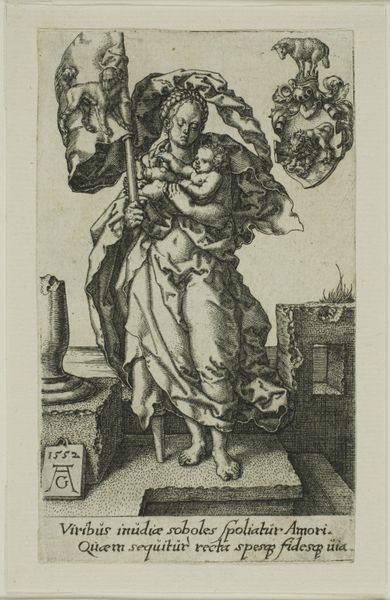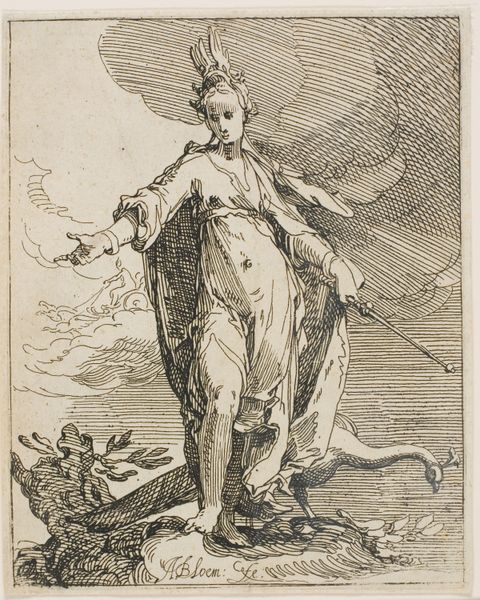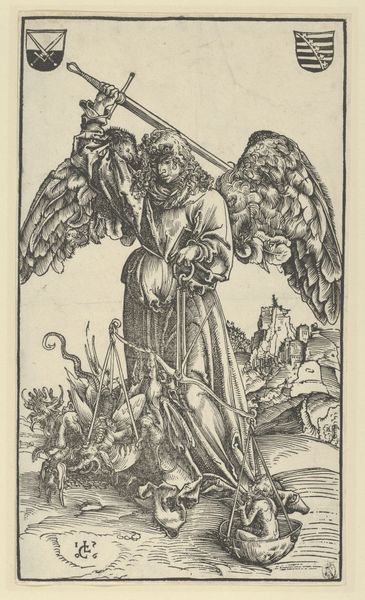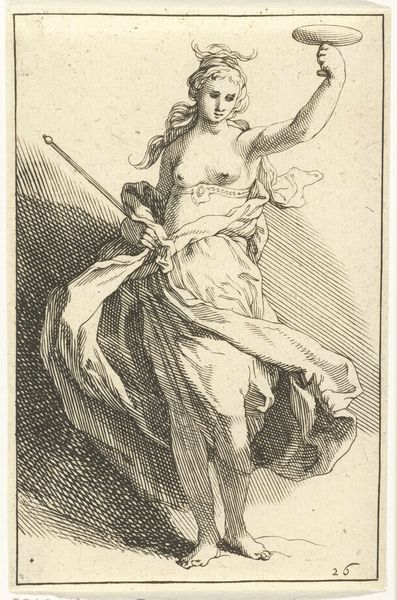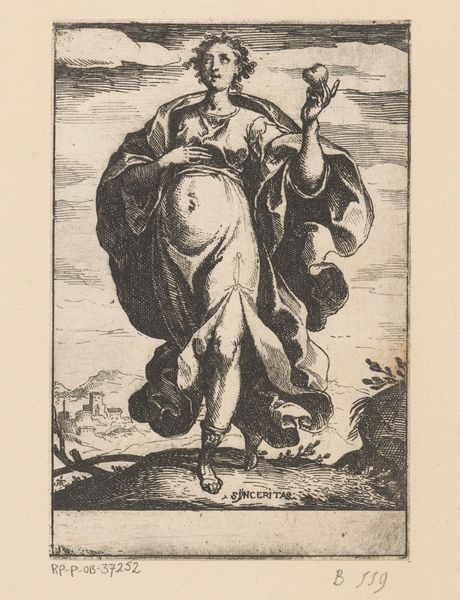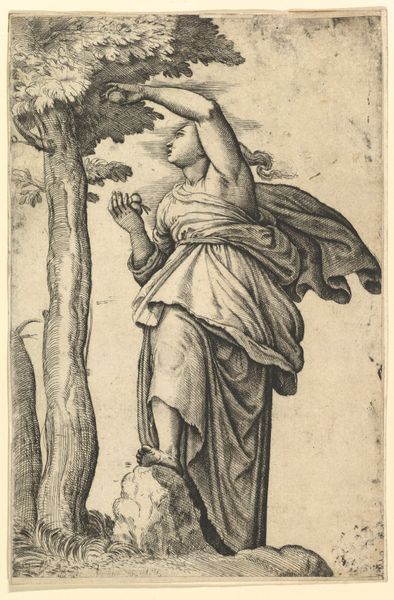
The Virgin of Sorrows: Angel; one of nine surrounding compartments from the Virgin of Sorrows, now separated 1520 - 1582
0:00
0:00
Dimensions: Sheet: 2 13/16 × 2 1/4 in. (7.2 × 5.7 cm)
Copyright: Public Domain
This tiny engraving of an angel was made by Giorgio Ghisi in the 16th century. It's one of nine surrounding compartments, now separated, from the Virgin of Sorrows. Ghisi was a master of the printmaking technique known as engraving. Using a tool called a burin, he would have painstakingly carved lines into a copper plate. This was a highly skilled, labor-intensive process demanding precision and control. The depth and density of the engraved lines determine the amount of ink held by the plate, and therefore the tonal range of the print. Look closely, and you'll see the incredible detail Ghisi achieved, from the delicate feathers of the angel's wings to the folds of fabric. Engravings like this were part of a burgeoning print market, allowing images to be reproduced and disseminated widely. Though seemingly worlds away from mass production, the engraving process laid groundwork for future industrial reproduction. It's a powerful reminder that even the most handcrafted objects can be understood in relation to broader economies of labor and consumption.
Comments
No comments
Be the first to comment and join the conversation on the ultimate creative platform.
